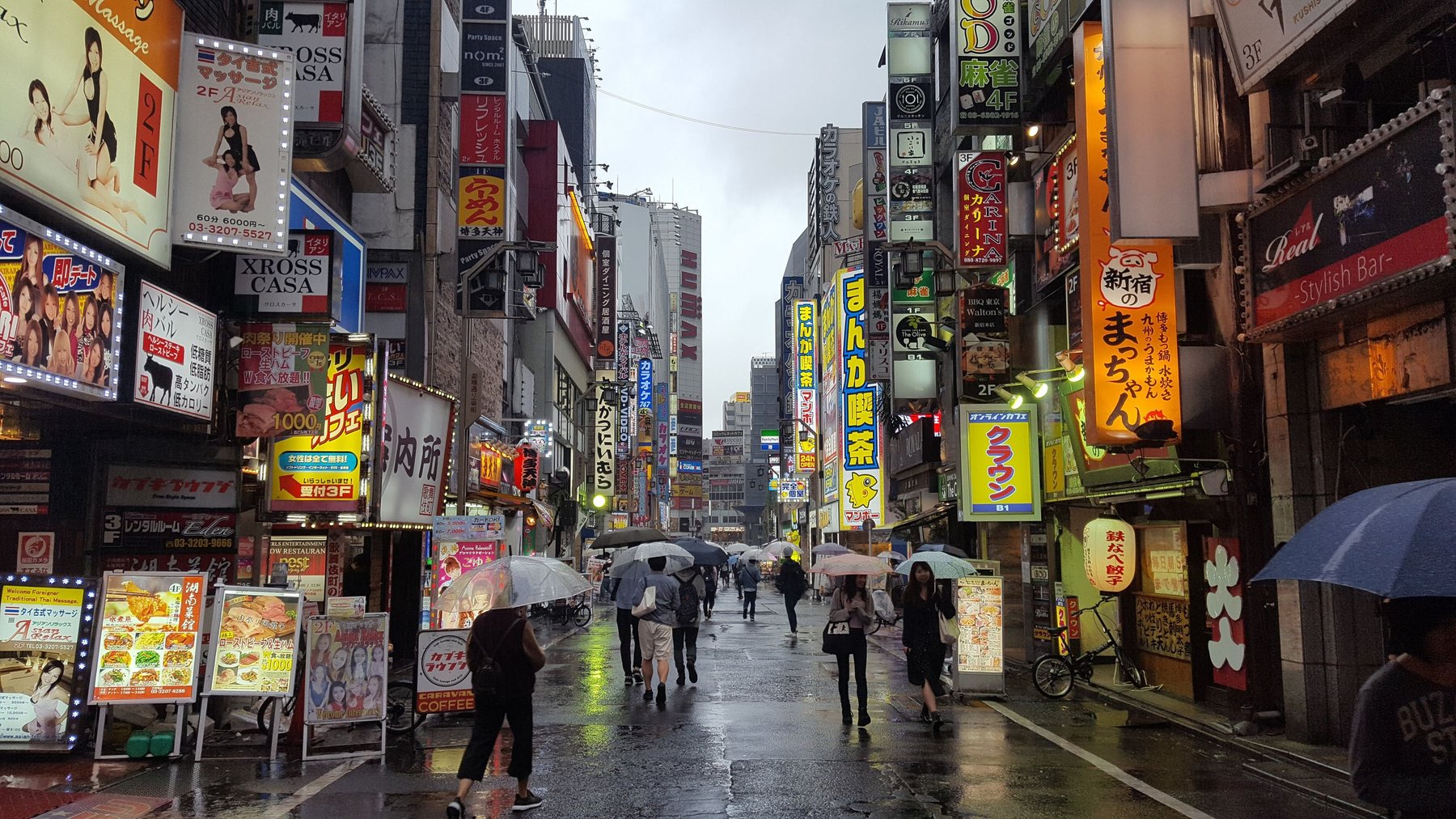TokyoJapan,
Japan,

Kabukicho, Shinjuku.
View on map 
Shibuya Crossing.
View on map 
Train tracks leading to Shinjuku Station.
View on map 
Omoide Yokocho (Memory Lane)—an alley lined with izakaya in Shinjuku.
View on map 
Yoyogi Park viewed from the Tokyo Metropolitan Government Building’s free observation deck.
View on map 
Sake barrels in Yoyogi Park.
View on map 
Information about the sake barrels in Yoyogi Park.
View on map 
Street leading to Hōzōmon gate, the entrance to Sensō-ji (Tokyo’s oldest temple).
View on map 
Hōzōmon gate, built in 942 CE, sits beside a five-storied pagoda.
View on map 
Tokyo Tower.
View on map 
View of Tokyo from the Rainbow Bridge.
View on map 
The Rainbow Bridge from Odaiba.
View on map 
Yanaka Ginza shopping street.
View on map 
Kabukicho, Shinjuku.
View on map 
A capsule hotel—a cheap way to ensure a terrible night’s sleep.